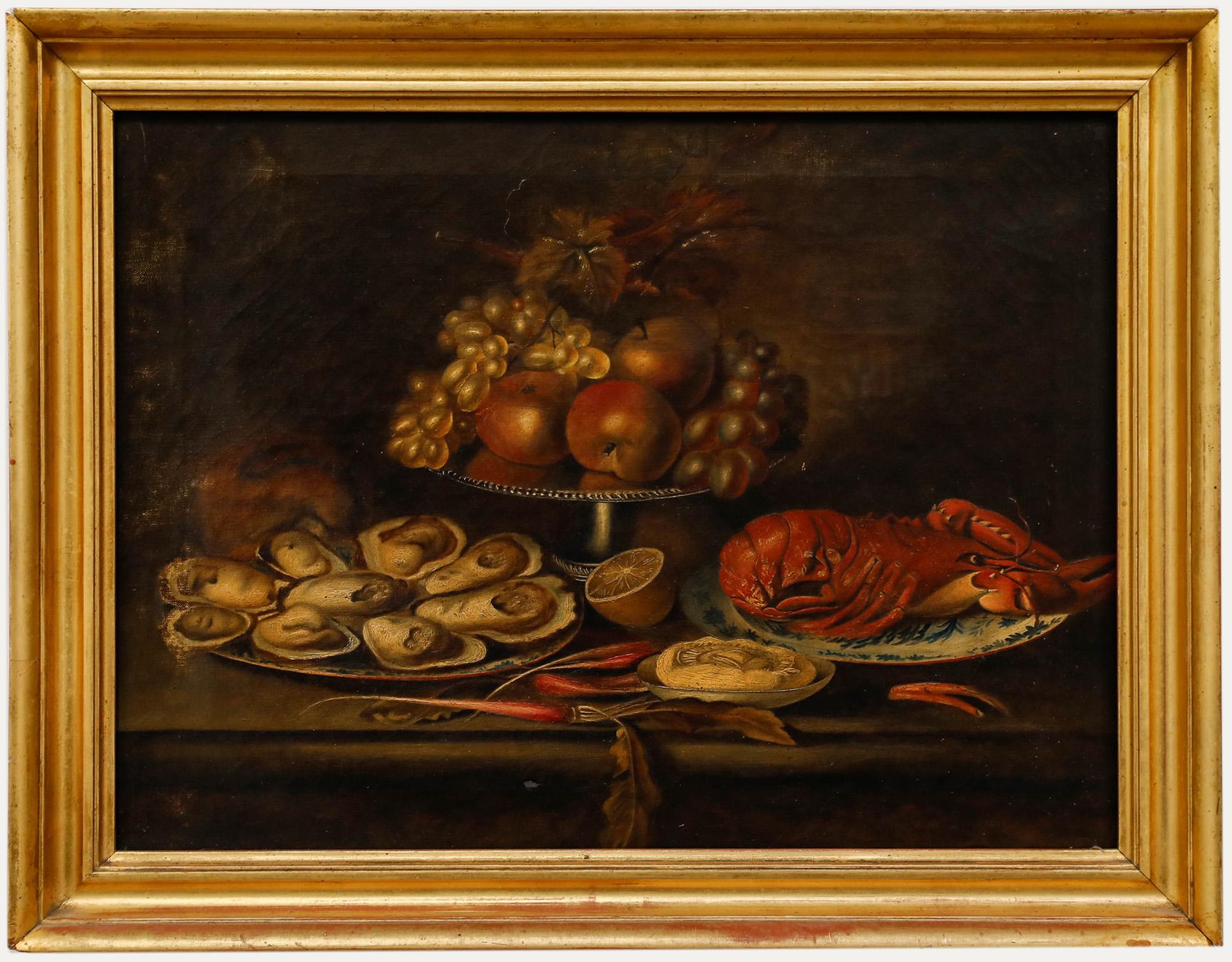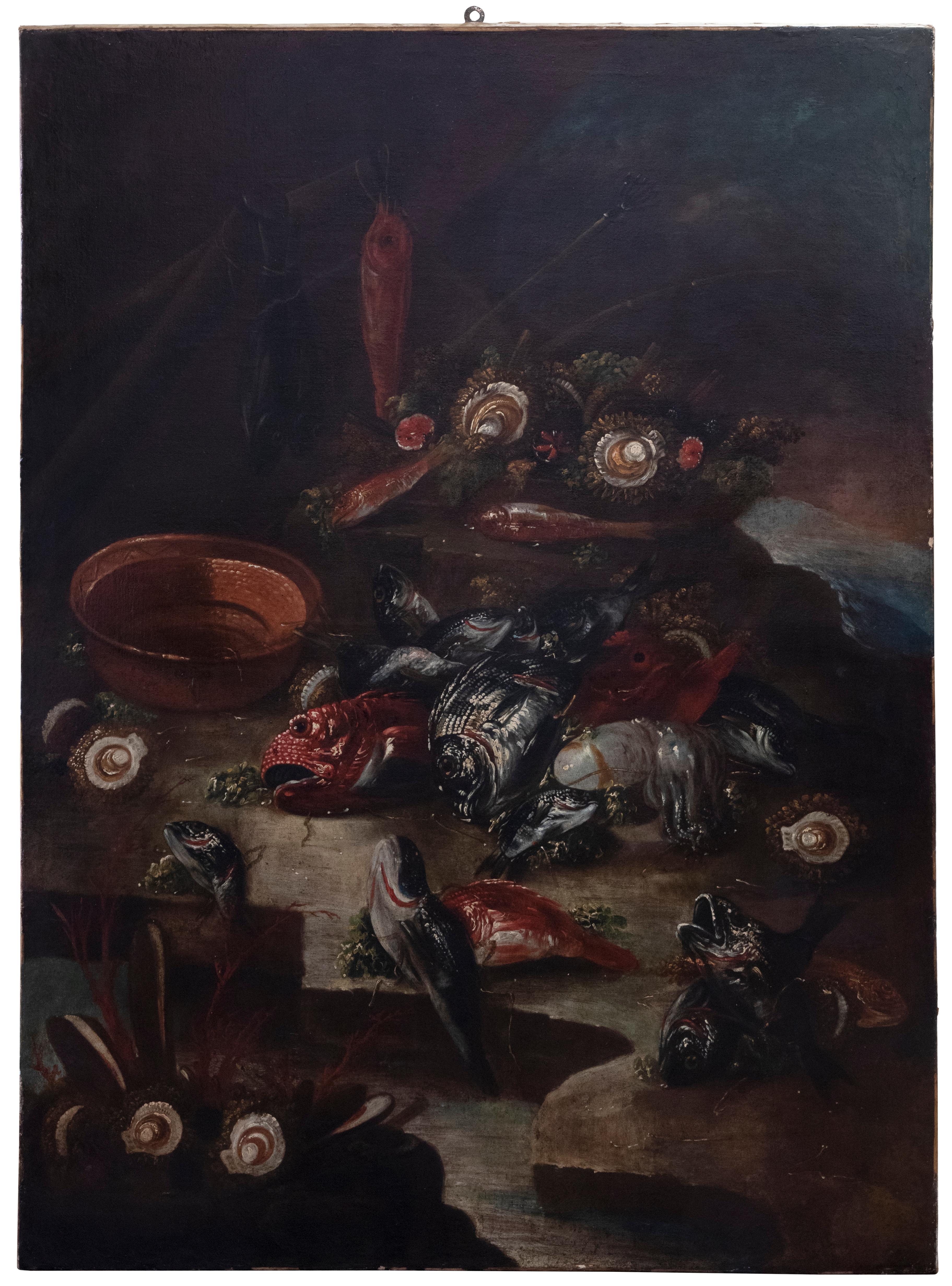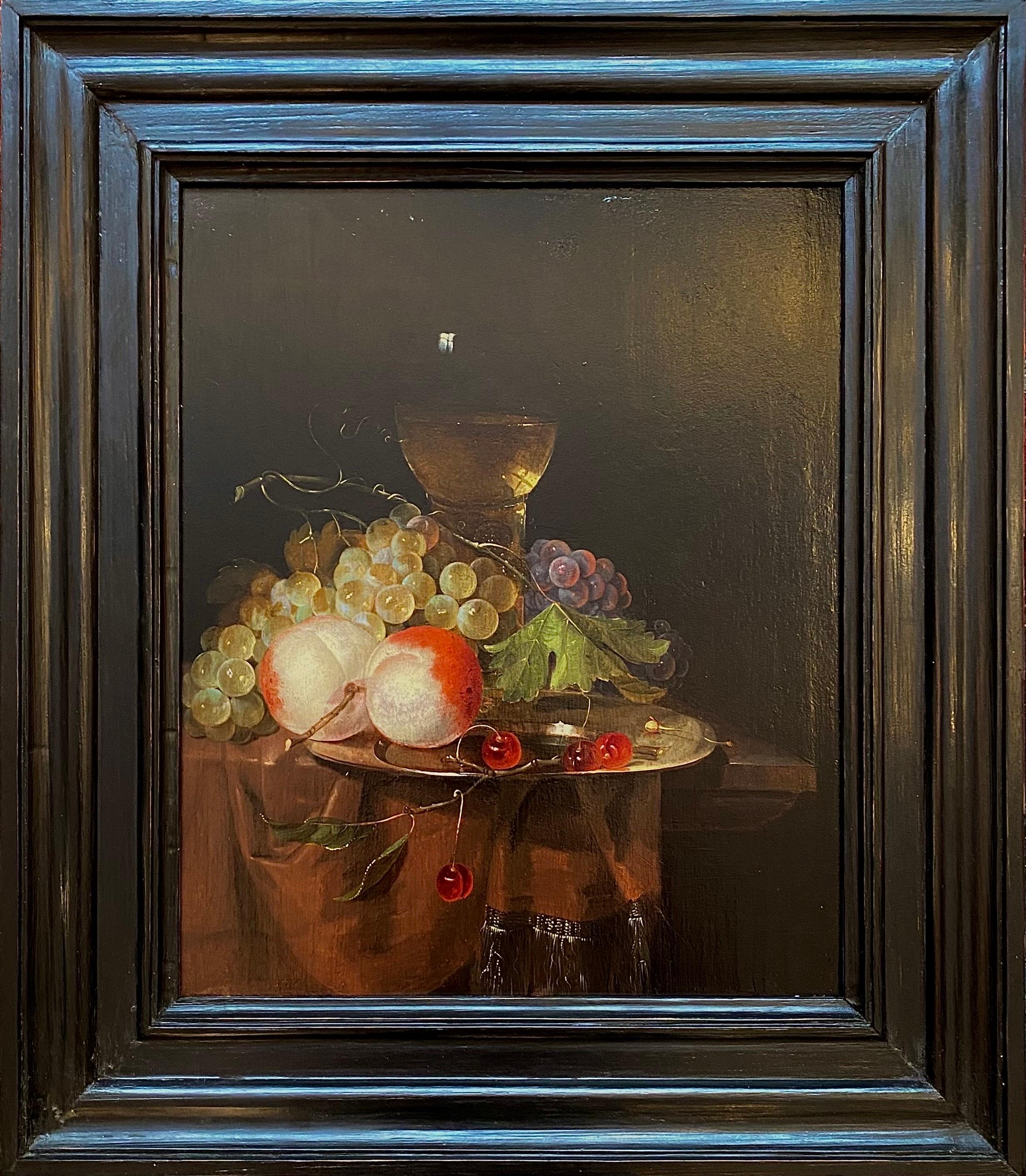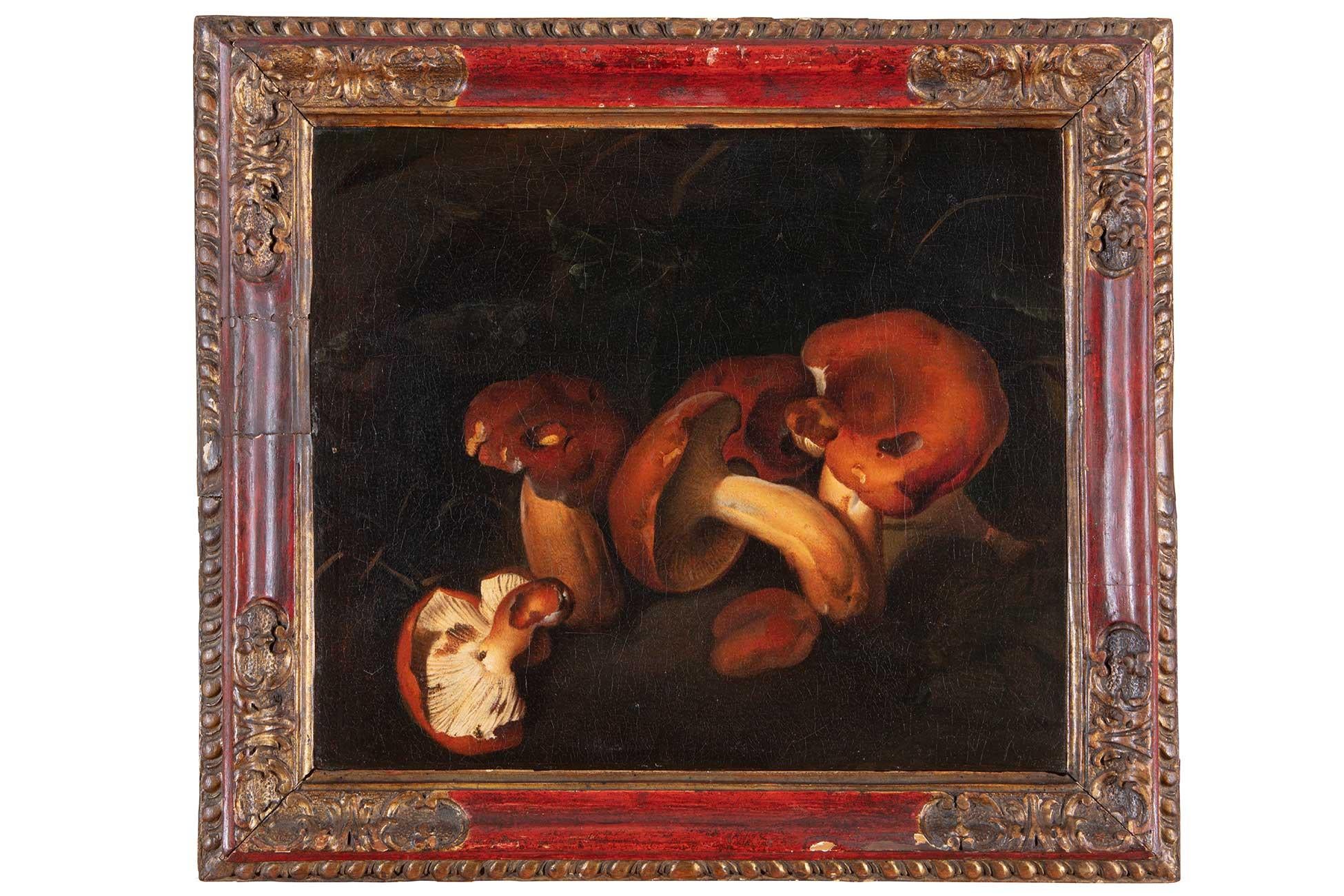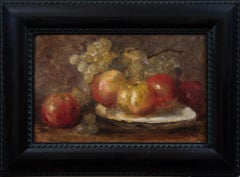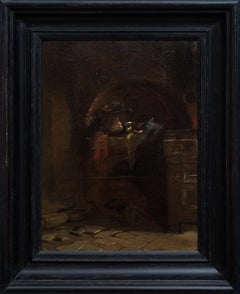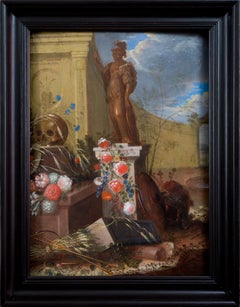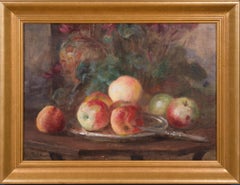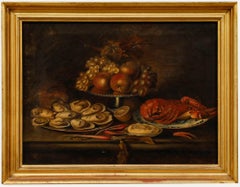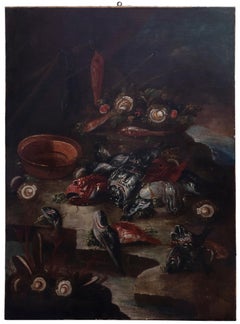Items Similar to Still Life with Oysters - The earliest known still life in Swedish art history
Want more images or videos?
Request additional images or videos from the seller
1 of 13
Govert Dircksz CamphuysenStill Life with Oysters - The earliest known still life in Swedish art historyc. 1652–63
c. 1652–63
$13,615.08
£10,179.99
€11,500
CA$19,067.44
A$20,962.48
CHF 10,835.83
MX$250,829.41
NOK 136,799.91
SEK 128,253.74
DKK 87,606.20
About the Item
This previously unpublished painting was first securely attributed to Govert Dircksz Camphuysen in 1944, following an examination at the Nationalmuseum in Stockholm during which the artist’s signature was discovered. As this attribution was not known to Bertil Rapp, the painting is not included in his thorough survey of the artist’s life and work during his Swedish period (1652–63), published in Djur- och Stilleben i karolinskt måleri (1951, pp. 15–26). The work is of considerable art historical importance. Alongside another undated still life by Camphuysen, Still Life with Provisions and a Cat (formerly in the De Geer collection at Finspång Castle), it is considered the earliest known still life in Swedish art history (op. cit., p. 24). These works mark the beginning of still life painting in Sweden. Through them, Camphuysen introduced a new subject matter that would later be taken up by the Swedish-born painter Christian Thum (c. 1625–1686).
Like many artists of his time, Camphuysen was drawn by reports of growing artistic patronage in Sweden and decided to seek opportunity in service of the emerging great power. In the spring of 1652, he left Amsterdam with his family and arrived in Skåne in the autumn. From 1653, he was active at the court of Dowager Queen Maria Eleonora in Nyköping (widow of Gustavus Adolphus and mother of Queen Christina). Records from her account books in 1654 reveal that Camphuysen undertook several journeys on her behalf, including to Arboga and Ulfsunda. In August that year, he returned from Ulfsunda in the dowager queen’s retinue (op. cit., pp. 17–18). That same year, he also executed a large painting, Cows and Peasants (2 x 2 m), now at Övedskloster in Skåne.
Following the dowager queen’s death on March 28, 1655, Camphuysen moved to Stockholm. His name appears regularly in the baptismal records of the German Church there until 1661. According to Old Granberg (Konsthistoriska studier och anteckningar, 1895, p. 46), Camphuysen also served as court painter to King Charles X Gustav after Queen Christina’s abdication. It was during this period that he produced what is perhaps his most famous work, The Royal Castle of Tre Kronor, dated 1661—an iconic topographical view of seventeenth-century Stockholm (Stockholm City Museum). In his final years in Sweden, Camphuysen was employed by Magnus Gabriel De la Gardie at Jacobsdal (now Ulriksdal Palace). Castle records show that he was working on decorative commissions in the great hall there in 1662–63 (Rapp, op. cit., p. 25). He returned to Amsterdam in 1665.
The present painting was formerly part of the collection at Ekhof, an estate with roots in the 16th century. In 1566, Sigvard Månsson Kruse af Elghammar (1578–1624) purchased one of the two tax farms in the village, converting it into a noble estate. His son, General Erik Kruse af Kajbala (1616–1665), was granted tax exemption in 1653 and built a manor originally named Ånhammar. The estate was inherited by his son, Carl Gustaf af Kruse (1651–1732), and remained in the family until 1720. During her husband’s captivity in Russia following the Battle of Poltava, Charlotta Catharina, Carl Kruse’s wife, sold the property. It was then acquired by the widow Belau (or Below), and the estate became known as Ekhammarshof and later Ekhof. It subsequently passed to her son-in-law, Gudmund Adelberth. Her granddaughter, Hedvig Charlotta von Fuhrman, married Ture Johan Bielke in 1768. He had the current main building erected around 1790; it was completed in 1792. Involved in the conspiracy to assassinate King Gustav III, Bielke took his own life by poison to avoid prosecution. His widow remained on the estate until 1795. Later owners include von Baumgarten (1799), Wachtmeister (1816), Edlund (1825), Lönnerberg (1849), and Aspelin (1856). From 1926, the estate belonged to the Björling family, and in 1978 it was acquired by Johan and Lena Rinman. Today, the estate operates under Ekhov Säteri AB.
signed “G. Camphuysen fecit”
oil on panel
unframed 29.8 x 36 cm (11¾ x 14¼ in.)
framed 40 x 46 cm (15 ¾ x 18 ⅛ in)
Provenance:
Ekhof, Björnlunda Parish, Gnesta Municipality, Södermanland, Sweden
Expertise:
Stéphane Pinta, Cabinet Turquin, Paris
Condition:
The painting underwent a comprehensive conservation between 2024 and 2025 under the care of Sonia Leon. The aged varnish was removed, and areas affected by age-related wear were carefully retouched.
- Creator:Govert Dircksz Camphuysen (1623 - 1672, Dutch)
- Creation Year:c. 1652–63
- Dimensions:Height: 15.75 in (40 cm)Width: 18.12 in (46 cm)
- Medium:
- Movement & Style:
- Period:1650-1659
- Condition:The painting underwent a comprehensive conservation between 2024 and 2025 under the care of Sonia Leon. The aged varnish was removed, and areas affected by age-related wear were carefully retouched.
- Gallery Location:Stockholm, SE
- Reference Number:1stDibs: LU1445216449362
About the Seller
5.0
Platinum Seller
Premium sellers with a 4.7+ rating and 24-hour response times
Established in 2020
1stDibs seller since 2020
206 sales on 1stDibs
Typical response time: <1 hour
Associations
International Confederation of Art and Antique Dealers' Associations
- ShippingRetrieving quote...Shipping from: Stockholm, Sweden
- Return Policy
Authenticity Guarantee
In the unlikely event there’s an issue with an item’s authenticity, contact us within 1 year for a full refund. DetailsMoney-Back Guarantee
If your item is not as described, is damaged in transit, or does not arrive, contact us within 7 days for a full refund. Details24-Hour Cancellation
You have a 24-hour grace period in which to reconsider your purchase, with no questions asked.Vetted Professional Sellers
Our world-class sellers must adhere to strict standards for service and quality, maintaining the integrity of our listings.Price-Match Guarantee
If you find that a seller listed the same item for a lower price elsewhere, we’ll match it.Trusted Global Delivery
Our best-in-class carrier network provides specialized shipping options worldwide, including custom delivery.More From This Seller
View AllStill Life with Fruits, 1911, Oil Painting
Located in Stockholm, SE
This exquisite still life, painted in 1911, showcases Emma Ekwall’s mastery in capturing the vibrant textures and colors of fruit. The composition features apples and grapes arranged...
Category
1910s Post-Impressionist Still-life Paintings
Materials
Canvas, Oil, Board
Interior of a Kitchen, c. 1840
Located in Stockholm, SE
Egron Sellif Lundgren (1815–1875) Sweden
Interior of a Kitchen, c. 1840
oil on paper laid on cardboard,
inscribed “Lundgren Nr. 15” on the reverse.
unframed 27.5 x 20.5 cm (10 ¾ x ...
Category
1840s Old Masters Interior Paintings
Materials
Paper, Oil, Board
Vanitas with Pallas Athena, Wheat, and Flowers, 1701
Located in Stockholm, SE
A Rare and Significant Discovery.
We are pleased to offer this newly discovered vanitas still life by the enigmatic German artist Johann Andreas von Düwens (?-1716). Titled "Vanitas...
Category
Early 1700s Old Masters Still-life Paintings
Materials
Oil, Wood Panel
Still Life with Apples, c. 1910
Located in Stockholm, SE
Still Life with Apples is an exquisite still-life painting that captures a quiet moment of abundance and peace. On a humble wooden table lies a cluster of ripe apples, their rosy and...
Category
1910s Realist Still-life Paintings
Materials
Canvas, Oil
The Grape Seller by Jacob Ochtervelt (Workshop), Oil on Canvas, Period Frame
Located in Stockholm, SE
Jacob Ochtervelt (Workshop)
The Grape Seller
oil on canvas
unframed: 80.7 x 61 cm.; 31 ¾ x 24 in.
framed: 109.5 x 89 cm.; 43 1/8 x 35 in.
Essay:
Th...
Category
1660s Dutch School Interior Paintings
Materials
Canvas, Oil
$33,149 Sale Price
20% Off
Free Shipping
The Grape Seller - Workshop of Jacob Ochtervelt
Located in Stockholm, SE
Jacob Ochtervelt (Workshop)
The Grape Seller
oil on canvas
unframed: 80.7 x 61 cm.; 31 ¾ x 24 in.
framed: 109.5 x 89 cm.; 43 1/8 x 35 in.
Essay:
This captivating piece, originating from the studio of the revered Dutch artist Jacob Ochtervelt, mirrors the composition of a signed and dated 1669 canvas by Ochtervelt that is presently housed in the Hermitage museum. Its subject, "The Grape Seller" immerses us in a typical 17th-century interior, replete with characters from various strata of society.
At the center, a fruit vendor is depicted bending over to weigh grapes for the buyer. A child hands some of the grapes to her mother to taste, their attentive maid standing by. The backdrop showcases typical Ochtervelt details: a hint of the city visible through the doorway, light filtering in through an overhead window, and a playful dog at their side.
The exquisite quality of the piece is evident in the minutiae, such as the intricate detailing of the mother's earring, which in reality spans only a few millimeters yet boasts impressive attention to detail. Initially, Sotheby's considered this work to be an autograph piece by Ochtervelt. But due to some uncertainty, it was auctioned as Workshop of Jacob Ochtervelt. On the other hand, the esteemed Cabinet Turquin in Paris leans toward attributing the piece directly to Jacob Ochtervelt himself.
The painting is framed in an authentic period frame, which has been delicately restored by Stockholm's Förgyllning och Bildhuggeri. The frame retains its age-old patina and, while in used condition, has minor imperfections adding to its charm.
Another interesting thing worth to mention is the painting's provenance. It was once owned by the 1st Viscount Rothermere (1868-1940), the founder of the Daily Mail and Daily Mirror...
Category
17th Century Old Masters Interior Paintings
Materials
Canvas, Oil
You May Also Like
English School Late 19th Century Oil - Still Life of Oysters and Lobster
Located in Corsham, GB
A charming still life study depicting oysters, lobsters and a platter of fruit painted in a Dutch Golden Age style. Unsigned. Presented in a gilt frame. On canvas.
Category
Late 19th Century Still-life Paintings
Materials
Oil
Still Life with Fishes and Oysters - Oil on Canvas - 17th Century
Located in Roma, IT
Still life with fishes and oysters is an original oil on canvas realized in the 17th Century by Neapolitan School Master.
Impressive in size as well as for its vivid representation o...
Category
17th Century Old Masters Still-life Paintings
Materials
Oil
$18,646 Sale Price
25% Off
Still Life Adriaenssen Paint 17th Century Oil on canvas Old master Flemish
Located in Riva del Garda, IT
Alexander (Van) Adriaenssen (Antwerp, 1587 - 1661)
Still life with oysters, fish and lobsters
Oil on canvas (67 x 110 cm - In frame 87 x 131 cm)
Expertise by Prof Massimo Pir...
Category
17th Century Old Masters Paintings
Materials
Oil
$16,622 Sale Price
20% Off
"Still Life with Fruits", 17th Century Oil on Canvas by Flemish School
Located in Madrid, ES
FLEMISH SCHOOL
17th Century
STILL LIFE WITH FRUITS
unsigned
oil on canvas
17-3/4 x 21-3/4 inches (45 x 55 cm.)
framed: 22 x 27 inches (56 x 68 cm.)
PR...
Category
17th Century Flemish School Still-life Paintings
Materials
Canvas, Oil
Still Life, 17th Century Oil on Panel Painting
Located in London, GB
Oil on panel, monogrammed mid left
Image size: 15 x 12 1/4 inches (38 x 31 cm)
Dutch ripple style frame
Loeding was born in Leiden in around 1637 and was admitted into the Leiden Guild of St Luke in 1664. Like other Dutch cities, Leiden required membership in the guilds in order to sell wares falling under the various specifications. There is no record of his artistic training or influences, but he likely belonged to the circle of artists including Pieter de Ring and Gerrit Dou, who founded and maintained the Guild. Loeding is last registered as a member in 1673.
One of the most versatile genres that emerged from Dutch 17th Century artistic specialisms is that of 'pronkstilleven'; a laden table with a variety of rich textures, like ornate glassware, gilded goblets, exquisite nautilus cups...
Category
Mid-17th Century Still-life Paintings
Materials
Oil, Panel
17th Century by Nicolas van Houbraken Still Life with Mushrooms Oil on Canvas
Located in Milano, Lombardia
Nicolas Van Houbraken (Messina, Italy, 1668 - Pisa, Italy, 1733)
Title: Still life with mushrooms
Medium: Oil on canvas
Dimensions: without frame 26 x 32 cm - with frame 38.5 x 33.5...
Category
17th Century Old Masters Still-life Paintings
Materials
Cotton Canvas, Canvas, Oil
More Ways To Browse
Antique Stills
Used Baptismal
Oyster Art
Antique Swedish Frame
Antique Poison
Swedish Panels
Anna Costa Paintings
Barbara Woods Oil Painting
Colin Fraser
Daniel Keys
Dark Floral Oil Painting
Deborah Windsor
Dorothy Southern
Dutch Masters Flowers
Fruit Realistic
Gary Komarin Cake
Joy Taylor
Lemons And Oranges Painting
